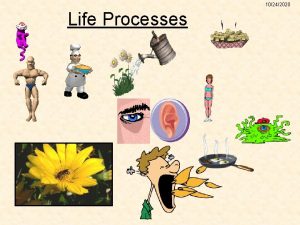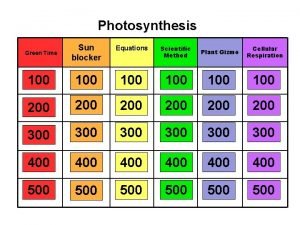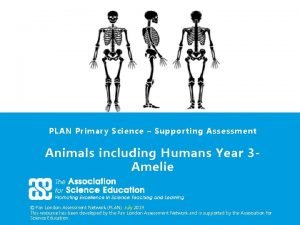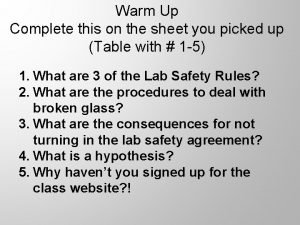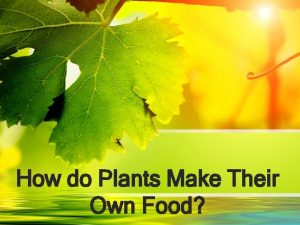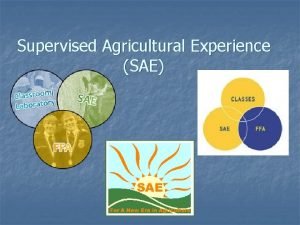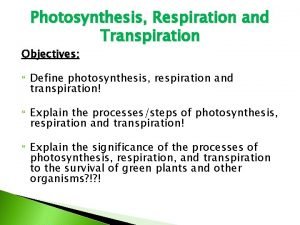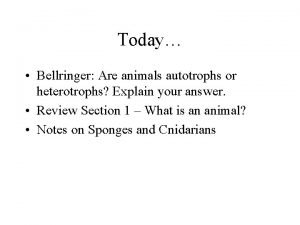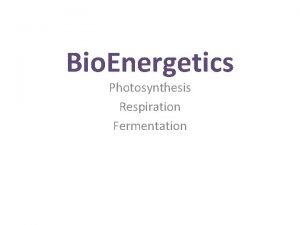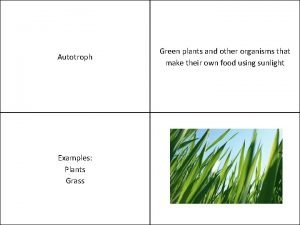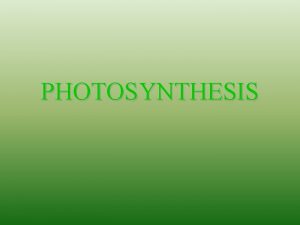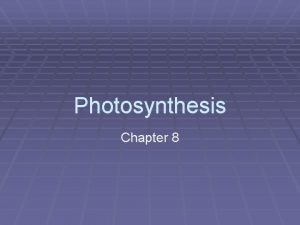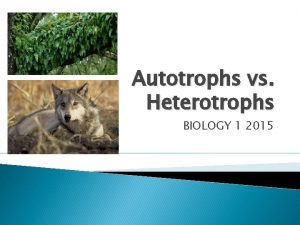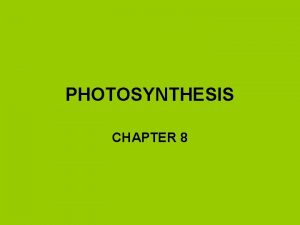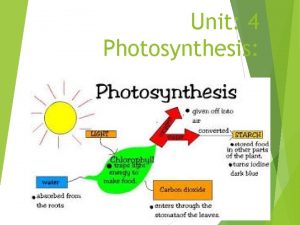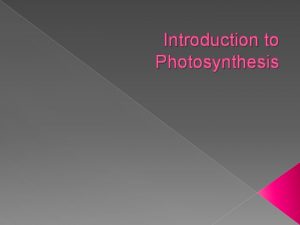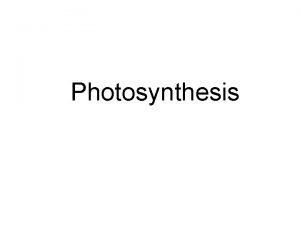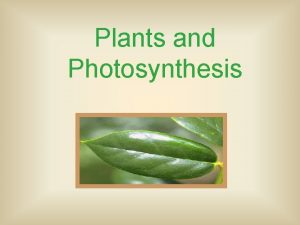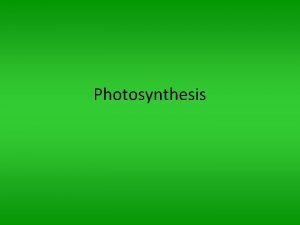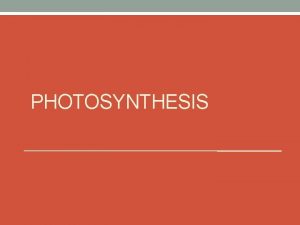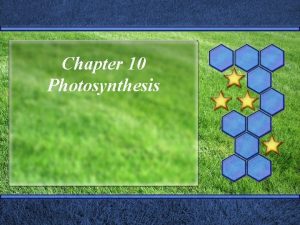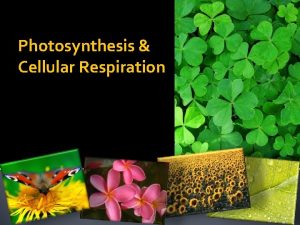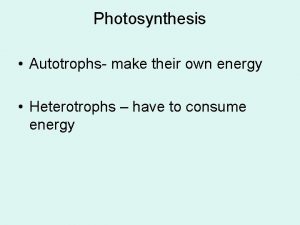Photosynthesis How autotrophs plants manufacture their own food














- Slides: 14

Photosynthesis How autotrophs (plants) manufacture their own food

What is photosynthesis? Photosynthesis is the process by which autotrophs manufacture their own food (glucose) using sunlight, carbon dioxide and water.

Energy Conversion During the process of photosynthesis, light energy from the sun is converted into chemical energy that can be stored and transported in plants.

Requirements for Photosynthesis • Chlorophyll or other pigment (found in autotrophs) • Carbon dioxide (CO 2) from the atmosphere • Water (H 2 O) from the soil or atmosphere • Light, usually as solar energy from the sun

Products of Photosynthesis • Glucose (C 6 H 12 O 6) - sugar • Oxygen gas (O 2)

Chemical Equation 6 CO 2 + 6 H 2 O carbon + water light C 6 H 12 O 6 + 6 O 2 glucose + oxygen dioxide In the presence of light energy, six molecules of carbon dioxide combine with six molecules of water to produce one molecule of glucose and six molecules of oxygen.

Factors Affecting the Rate of Photosynthesis 1. Light intensity (very high intensity can damage the chlorophyll) 2. Availability of raw materials (CO 2, H 2 O) 3. Temperature (optimum is 25 -35ºC)

Site of Photosynthesis: The Chloroplast • Photosynthesis takes place in the chloroplasts of plant cells. • It primarily occurs in the leaves.

Structure of a Chloroplast Thylakoids are the saclike membranes that contain chlorophyll. o A granum is a stack of thylakoids • • The stroma is the liquid-filled space inside the chloroplast. granum stroma thylakoids

Two phases of Photosynthesis 1. Light-dependent phase 2. Light-independent Phase (Calvin Cycle)

1. Light-Dependent Phase (take place in thylakoids) a. Light energy is absorbed by chlorophyll and changes into ATP. b. Some ATP is used to split the water molecule (H 2 O) into hydrogen & oxygen. c. Oxygen (O 2) is released into the atmosphere.

Light-Independent Phase (Calvin Cycle) – takes place in stroma • May happen in the light or in the dark a. ATP (from previous phase) and hydrogen (from the water molecule that was split) combine with CO 2 (from the atmosphere). b. The end result is glucose: C 6 H 12 O 6


Remember, if you like to eat and breathe…thank a plant!
 Where does photosynthesis happen
Where does photosynthesis happen Green plants make their own food by photosynthesis
Green plants make their own food by photosynthesis How do plants move
How do plants move The food that plants produce during photosynthesis is
The food that plants produce during photosynthesis is Animals can make their own food
Animals can make their own food Animals can make their own food
Animals can make their own food Organisms that make their own food
Organisms that make their own food How indoor plants make their food
How indoor plants make their food What type of sae is when you own your own business
What type of sae is when you own your own business Photosynthesis and respiration of plants
Photosynthesis and respiration of plants Are sponges autotrophs or heterotrophs
Are sponges autotrophs or heterotrophs What is quaternary consumer
What is quaternary consumer Atp formula cellular respiration
Atp formula cellular respiration Grass is autotroph
Grass is autotroph Basidiomycetes heterotrophic or autotrophic
Basidiomycetes heterotrophic or autotrophic


